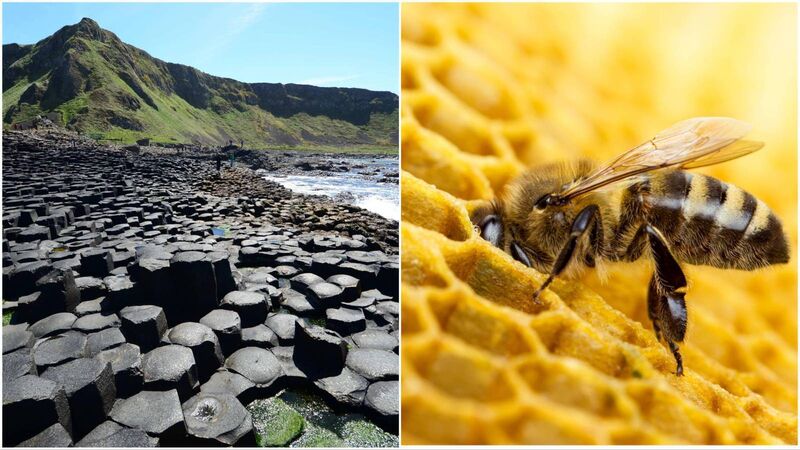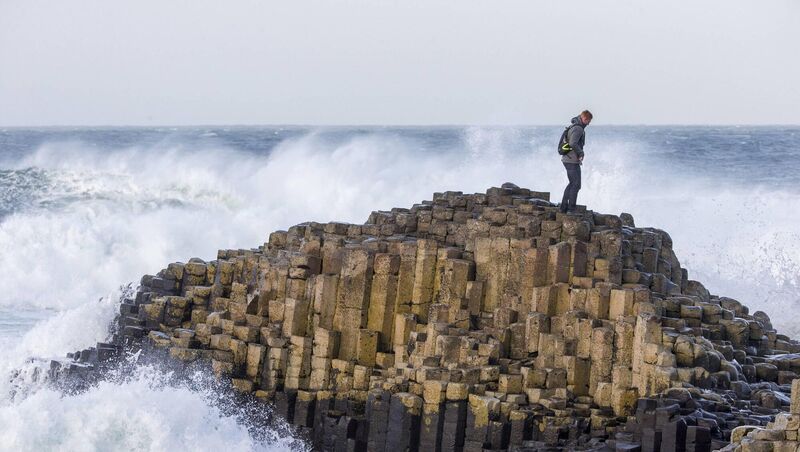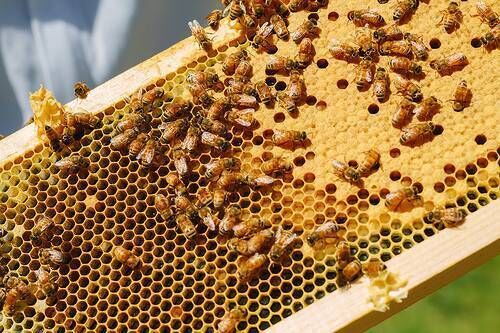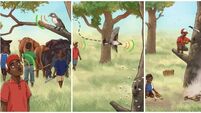Richard Collins: Make a bee-line for Giant's Causeway — it is really impressive

The hexagonal columns at Giant's Causeway were formed by a massive volcanic eruption. As the North American tectonic plate separated from the Eurasian plate, fissures opened through which molten magma surged to the surface. The lava cooled and solidified. The resulting columns would normally have roughly circular cross-sections. However, when cylinders are packed closely together, they leave gaps between them. The magma in Antrim continued to expand into these spaces. Only triangular square or hexagonal forms fit together snugly, in woodblock-floor fashion. The hexagon is the best compromise, and the nearest viable shape to the circle and is also used by bees when making honeycomb
‘Is not the Giant’s Causeway worth seeing’, James Boswell asked Samuel Johnson.
The great man replied that it was ‘worth seeing, yes, but not worth going to see’ — a sentiment not endorsed by Tourism Northern Ireland.
Nor do his fellow countrymen share Dr Johnson’s opinion. BBC Wildlife Magazine asked readers to name their favourite nature locations. The 51km-long ‘Causeway Coast’, between Lough Foyle and the Glens of Antrim, was voted UK's premier destination.
East of Bushmills, some 40,000 vertical basalt columns lead into the sea. Finn McCool built them so that a Scottish giant could visit him for one-to-one combat. Finn wasn’t strong on geography, however; his causeway took a rather circuitous route to Scotland; there are similar organ-pipe cliffs on the island of Staffa and in Iceland.

Our hero’s labours were aided by a massive volcanic eruption. As the North American tectonic plate separated from the Eurasian plate, fissures opened through which molten magma surged to the surface. The lava cooled and solidified. The resulting columns would normally have roughly circular cross-sections. However, when cylinders are packed closely together, they leave gaps between them. The magma in Antrim continued to expand into these spaces. Only triangular square or hexagonal forms fit together snugly, in woodblock-floor fashion. The hexagon is the best compromise, and the nearest viable shape to the circle.
If I have failed to explain how the hexagonal cross-sections formed, ask your local honeybee for a tutorial. She constructs hexagonal food-storage vessels and nurseries for baby bees. These honeycombs hold the maximum amount of honey for the least labour invested, and less beeswax is needed to make them. Darwin, who was fascinated by the behaviour of bees, declared that the honeycomb "is absolutely perfect in economising labour and wax".

Nor are bees the only hexagon devotees; this shape is found throughout the natural world. A dragonfly’s eye, for example, may have 30,000 closely-packed hexagonal cells.
Although the Antrim columns are 60 million years old, they are mere geological infants; Carrauntoohil is around six times older and rocks on Inishtrahull, off the Donegal coast, go back 1.7 billion years.
On a typical weekday this month, hordes of juvenile enthusiasts swarmed over the Giant’s climbing-frame. The North’s premier attraction has an impressive interpretive-centre. Black basalt slab construction renders it unobtrusive. Shuttle-buses ferry day-trippers to and from the main site.
The Causeway is a must-see for everyone but there’s a rival attraction for the eco-tourist. Rathlin Island, home of the blue-eyed golden hare, is 8km from the coast across a sound with treacherous tidal currents. These can generate an impressive whirlpool off the Island’s southern tip, which David, skipper of the island ferry, tells me is known as ‘Slough na Mara’. It almost sucked St Colmcille to a watery grave in the 6th Century.
The lighthouse at the western end of the island is another nautical freak; it is upside-down. Mist, blowing in from the Atlantic, is a navigational hazard. A light positioned at the top of the lighthouse could not be seen by mariners. Placed at ground level, it remains visible below the fog. A platform offers one of Ireland’s most magnificent wildlife sights — a sea-stack on which thousands of guillemots and razorbills nest.






